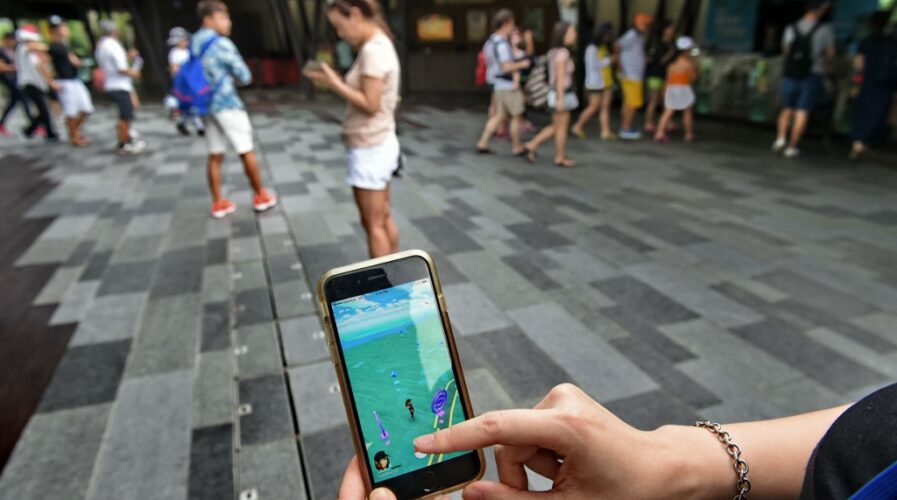
VoNR can support AR needs, such as those used in games such as Pokemon Go by developer Niantic. Niantic is developing a new AR-based social game that will draw on the power of 5G communications. (Photo by ROSLAN RAHMAN / AFP)
Singapore’s M1 world’s first to support VoNR on 5G SA network
VoNR, or voice over 5G new radio, is a basic call service that fully utilizes the SA (standalone access) architecture of the 5G network.
According to Oppo, as compared to other call services, VoNR provides significantly lower latency and improved sound and picture quality, resulting in an extremely elevated calling experience.
SA architecture, as opposed to NSA (non-standalone access) architecture, essentially means the 5G network operates independently, on its own 5G system, which allows the full benefits of 5G to be reaped.
NSA, on the other hand, latches on to the existing 4G (or LTE) networks that already exist to offer a little more improved speeds.
Last week, Singapore telco M1 announced a successful deployment of the world’s first VoNR service on their 5G SA network. In partnership with Korean tech giant Samsung, the project validated end-to-end 5G VoNR interoperability, a feat that was previously mostly achievable on 5G NSA networks.
The VoNR call service fully utilizes the SA architecture of M1’s 5G network for an improved high definition quality call experience, while providing 5G speeds for data-driven activities throughout the duration of the voice calls.
In comparison to calls made on the 5G non-standalone (NSA) network, which rides on existing 4G networks, the VoNR service promises faster call setup time and seamless voice call continuity, allowing it to provide the full 5G experience, where the speed is almost five times faster than 4G.
In addition, the VoNR service will open up numerous 5G SA-enabled data services and provide the baseline for quality video conferencing or augmented and virtual reality features. The rollout of the VoNR service for M1’s customers will be offered as an over-the-air software update via the M1 5G Booster plan.
Almost five years after game developer Niantic helped popularize augmented reality (AR) with Pokémon GO, the company, with Planet-Scale AR Alliance, is debuting a new 5G AR experience dubbed Codename: Urban Legends. The game is designed as a demo to showcase the power of 5G and AR.
“We have once again reached a groundbreaking milestone in our 5G SA journey – to be the first in the world to successfully support VoNR service on our 5G SA network.
We are glad to work with a like-minded partner like Samsung to achieve high-quality calls and a better 5G experience for our customers,” said Mr. Denis Seek, Chief Technical Officer, M1.
“Samsung is proud to play a pioneering role in placing Singapore at the forefront of network technology innovation, turning on next-generation service in the country.
“With VoNR, we look forward to delivering more transformative experiences to customers and businesses with M1,” said Ms. Sarah Chua, Vice-President, IT and mobile, Samsung Electronics Singapore.
The 5G SA market trial for M1 customers will be launched on 27 July, allowing M1 customers to tap into the VoNR service as well.
Other countries in the region that have or will be deploying 5G SA networks soon include Malaysia, the Philippines, and Thailand.
Whilst this is the first successful VoNR deployment of 5G on an SA network, Oppo in 2020 made the industry’s first 5G VoNR Over SA on a commercial device.
READ MORE
- Strategies for Democratizing GenAI
- The criticality of endpoint management in cybersecurity and operations
- Ethical AI: The renewed importance of safeguarding data and customer privacy in Generative AI applications
- How Japan balances AI-driven opportunities with cybersecurity needs
- Deploying SASE: Benchmarking your approach


